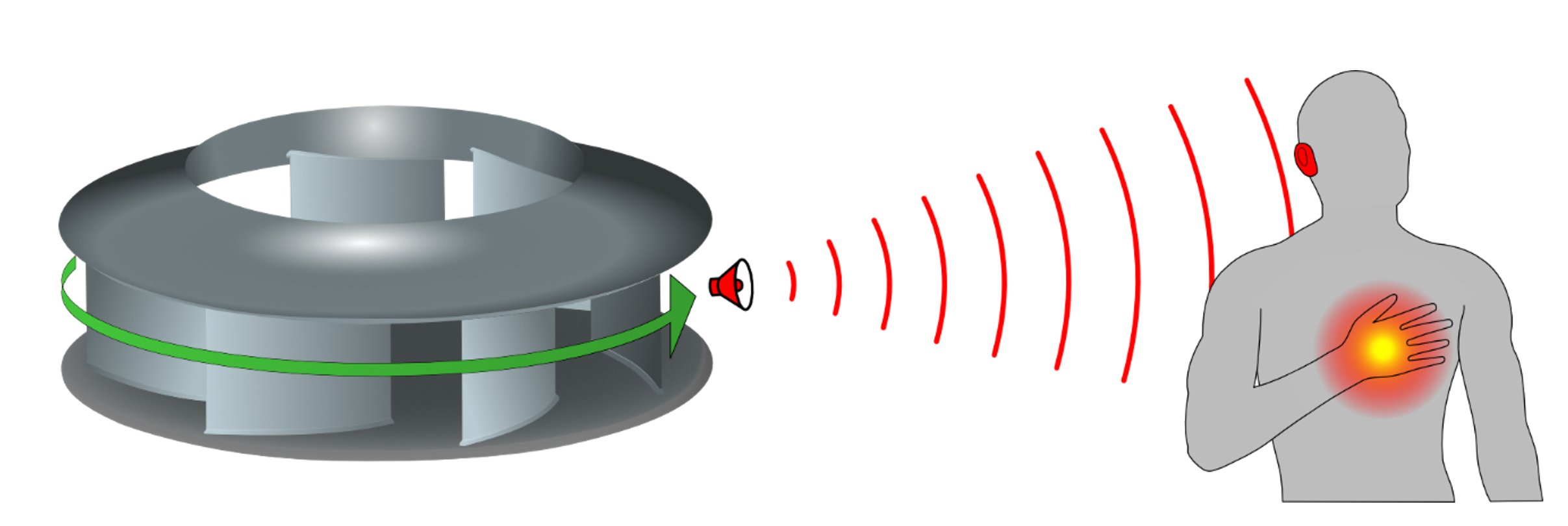How can quiet fans affect the indoor environmental quality (IEQ), safeguard people's health, and reduce global CO2 emissions? Here’s a report from the cutting edge of fan research.
Today most people spend the majority of their time indoors. The indoor environmental quality (IEQ) has become more and more important. When considering IEQ we usually think about temperature, CO2 level, and humidity. However, it has been established that sound quality is an important factor for good comfort in the indoor environment. Noise can directly damage health by causing loss of hearing and tinnitus but also indirectly through annoyance, sleep disturbance and stress. All of these will affect performance and well-being.
Studies have shown that noise has a detrimental effect on reading and writing and that the cognitive development in children is affected by chronic exposure to noise.
How can we assess sound quality?
Today's demands regulate the noise level in the building, a normal value is 30 dB(A). But how does 30 dB(A) sound? The sound characteristics are connected to tonal frequencies, which means that you can have tonal noise with low frequency, high frequency, or only have broadband noise that fulfills the 30 dB(A) requirement. This subject was studied in a project at the Swedish research institute, RISE. Different heating, ventilation, and air conditioning (HVAC) systems were set up and measured with the requirement that each of them must fulfill the 30 dB(A) demand.
Here you can listen to 3 different setups with different sound characteristics:
They all fulfill the 30 dB(A) requirement but sound quite different. Perhaps it is time to change the demands, to also include the sound characteristics. For deeper knowledge read more here
The health of millions of people are impacted by noise-related diseases. Lifestyle diseases are normally related to stress, unhealthy food, and a non-active lifestyle but, it has been shown in a WHO study that long term exposure to tonal noise can affect the autonomous and hormonal systems in the human body, leading to symptoms such as cardiac arrest, high blood pressure, hearing loss, and mental disorders.

The structure of modern buildings are very good at reducing external noise from traffic etc. and significant improvements have been made over recent years but the internal noise from HVAC systems is more difficult to isolate. Ventilation fans are the dominant noise source here and silencers are often installed to reduce the noise but the added pressure drop increases energy consumption and CO2 emissions. The noise is generally tonal in nature and changes with fan speed. In variable air volume (VAV) systems the fan speed changes continuously to meet the demand; which means the tonal noise changes continuously over a wide range of frequencies. Silencers are good at absorbing broadband noise but not so good at tonal noise. It is possible to design a silencer for some specific tone frequency but not for a wide range of tones.
Wanting to find a solution to these problems, Swegon has collaborated with Chalmers University of Technology and sponsored my industrial Ph.D. study entitled “a numerical method to predict and minimize fan tonal noise”. This study aims to identify and decrease the sources responsible for tonal noise in centrifugal fans.
The sources are now identified and the results has been published in one of the most reputable journals in the field; Physics of Fluids. In fact, the article was chosen as the Editors pick.
You can find the article here.
What do we learn from the study?
Naturally there needs to be a small gap between the rotating impeller and the fixed inlet duct. Because of the pressure difference there, air is forced through that gap. Turbulence is generated when the flow passing through the gap meets the main flow into the fan impeller (green rectangle Figure A). This turbulence (colored in blue in Figure B) evolves along with the fan shroud, is swept downstream and intersects with the leading edge of the fan blade (orange rectangle Figure B). This interaction accounts for uneven and unsteady surface pressure distribution among the blades. The surface in these regions fluctuates in a wide amplitude range, which produces tonal noise. This means that the source of the fan tonal noise has been identified (red area in Figure C).

Why is this important then?
With the knowledge built from this research we have the possibility develop our fans further and bring new products to the market, offering better sound characteristics that help improve the indoor environment quality, creating comfortable and healthy indoor spaces. And by cancelling the noise directly at the source, we do this without adding additional noise attenuators - saving fan energy and CO2 emissions in the process.

























.jpg?width=75&name=Image%20(5).jpg)








.jpg?width=75&name=magnus%20andersson_550x550%20(1).jpg)











.jpg?width=75&name=0%20(1).jpg)





-4.png?width=75&name=MicrosoftTeams-image%20(3)-4.png)















